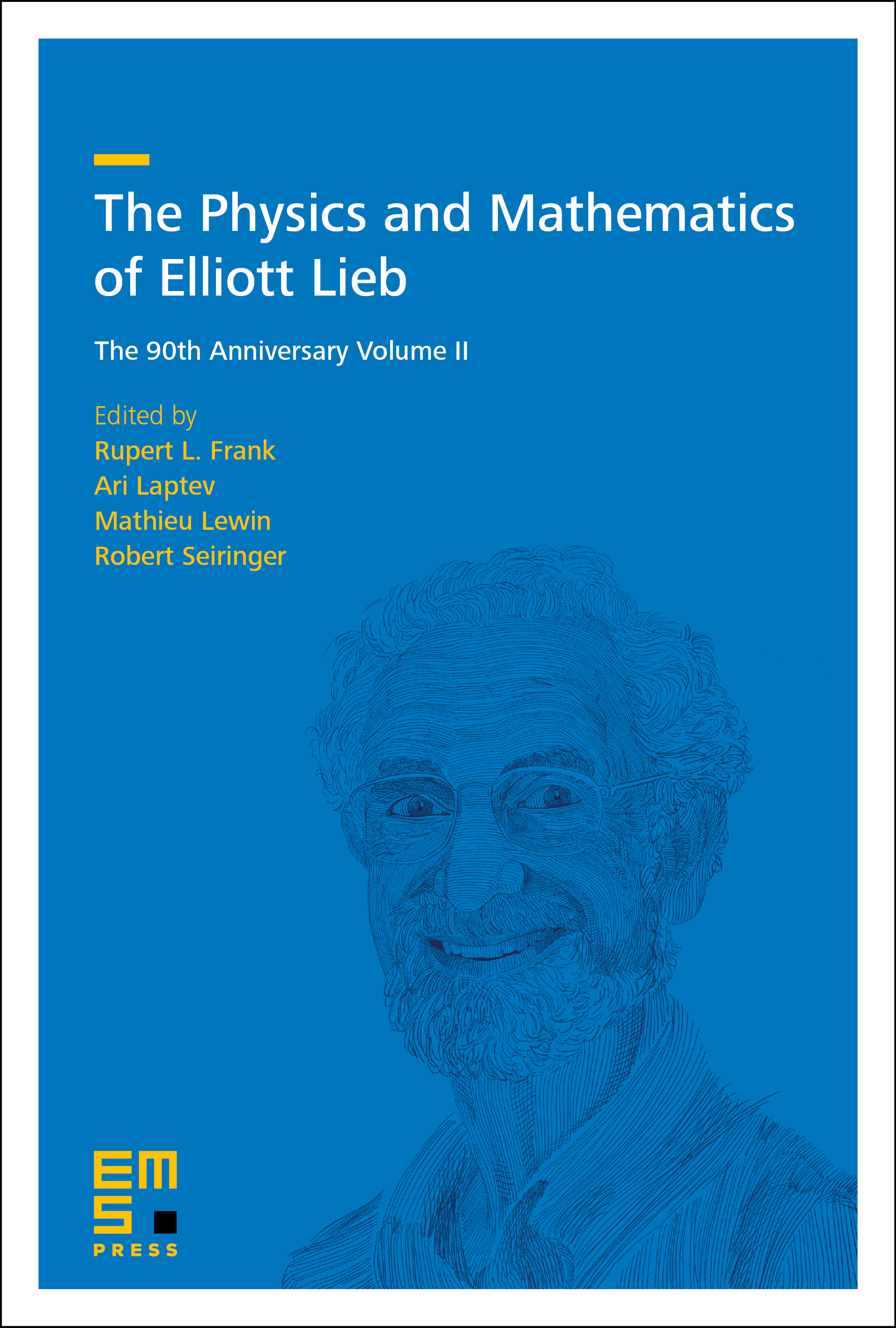The Physics and Mathematics of Elliott Lieb
The 90th Anniversary Volume II
Editors
Rupert L. Frank
Ludwig-Maximilians-Universität München, GermanyAri Laptev
Imperial College London, United KingdomMathieu Lewin
Université Paris Dauphine, FranceRobert Seiringer
Institute of Science and Technology Austria, Klosterneuburg, Austria

A subscription is required to access this book.
These two volumes are dedicated to Elliott Lieb on the occasion of his 90th birthday. They celebrate his fundamental contributions to the fields of mathematics, physics and chemistry.
Around 50 chapters give an extensive account of Lieb’s impact on a very broad range of topics and the resulting subsequent developments. Many contributions are of an expository character and are accessible to a non-expert audience of researchers in mathematics, physics and chemistry.
A non-exhaustive list of topics covered includes the problem of stability of matter, quantum many-body systems, density functional theory, topics in statistical mechanics, entropy inequalities and matrix analysis, functional inequalities and sharp constants.
pp. i–iv Frontmatterpp. v–viii Contentspp. 1–9 On the construction and exact solution of the Luttinger model by Mattis and LiebEdwin Langmann
pp. 11–17 Statistical mechanics of Coulomb systems: From electrons and nuclei to atoms and moleculesJoel L. Lebowitz
pp. 19–29 Relaxed energies, defect measures, and minimal currentsFang-Hua Lin
pp. 31–45 Elliott Lieb’s work on stability of matterMichael Loss
pp. 47–71 Comparison of Ising models under change of a priori measureJosé Madrid
pp. 73–77 The Polaron problemChiranjib MukherjeeSrinivasa R. S. Varadhan
pp. 79–92 From Lieb–Robinson bounds to automorphic equivalenceBruno Nachtergaele
pp. 93–120 The ionization problem in quantum mechanicsPhan Thành Nam
pp. 121–163 Elliott Lieb, vertex models, and artificial spin iceCristiano Nisoli
pp. 165–178 The Lieb–Oxford lower bounds on the Coulomb energy, their importance to electron density functional theory, and a conjectured tight bound on exchangeJohn P. PerdewJianwei Sun
pp. 179–217 The classical Jellium and the Laughlin phaseNicolas Rougerie
pp. 219–251 Compactness methods in Lieb’s workJulien Sabin
pp. 253–275 The state of the Lieb–Thirring conjectureLukas Schimmer
pp. 277–305 Bose gases in the Gross–Pitaevskii limit: A survey of some rigorous resultsBenjamin Schlein
pp. 307–327 Upper bound on the ground state energy of the two-component charged Bose gas with arbitrary massesAndreas SchönJan Philip Solovej
pp. 329–344 Wehrl entropy, coherent states and quantum channelsPeter Schupp
pp. 345–360 The Lieb–Oxford bound and the optimal transport limit of DFTMichael SeidlTarik BenyahiaDerk P. KooiPaola Gori-Giorgi
pp. 361–387 The energy and electron density of heavy atomsHeinz Siedentop
pp. 389–404 Recent advances on the Lieb–Liniger -Bose gasHerbert Spohn
pp. 405–446 The Lieb–Schultz–Mattis theorem. A topological point of viewHal Tasaki
pp. 447–500 Lieb’s spin-reflection-positivity method, Lieb lattice and all thatGuang-Shan Tian
pp. 501–516 Lieb’s permanental dominance conjectureIan M. Wanless
pp. 517–563 The -boundedness of wave operators for four-dimensional Schrödinger operatorsKenji Yajima
pp. 565–584 A direct road to entropy and the second law of thermodynamicsJakob Yngvason
pp. 585–628 The Brascamp–Lieb inequality and its influence on Fourier analysisRuixiang Zhang
pp. 629–652 The Lieb–Liniger gas with cold atomsWilhelm Zwerger
pp. 653–676 Publications of Elliott H. Liebpp. 677–682 List of contributorspp. 683–684 List of themes